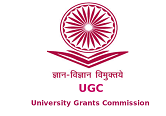Fabrication of an Interim Closed Hollow Bulb Obturator Prosthesis with Frozen Saline: A Modified Technique
DOI:
https://doi.org/10.55995/j-cpi.2019011Abstract
Maxillary defects can be congenital or acquired in nature. Anatomical defects may be created between oral and the nasal cavity due to surgical resection and patients are usually faced with difficulties while performing normal functions such as speaking and swallowing, due to the communication formed between the cavities. Rehabilitation of the defect site with an obturator prosthesis assists in achieving these goals reducing the morbidity and thereby improving the psychological state of the patient. While rehabilitating these large defects, one of the main problems is with the weight of the prosthesis. The prosthesis may become bulky and non-retentive due to its weight. To overcome these difficulties hollow bulb obturators fabricated using different techniques. Also, a closed obturator design has been found to be advantageous over the open type as it prevented the seepage of oral and nasal secretions into the hollow space thereby helping in easy maintenance of the prosthesis. This case report deals with a simplified method for fabrication of an interim obturator with closed hollow bulb design for a 75-year-old male patient with a Class I Aramany’s defect.
Downloads
Published
How to Cite
Issue
Section
License
The entire contents of the Journal of Clinical Prosthodontics and Implantology are protected under Indian and international copyrights. The Journal, however, grants to all users a free, irrevocable, worldwide, perpetual right of access to, and a license to copy, use, distribute, perform and display the work publicly and to make and distribute derivative works in any digital medium for any reasonable non-commercial purpose, subject to proper attribution of authorship and ownership of the rights.






